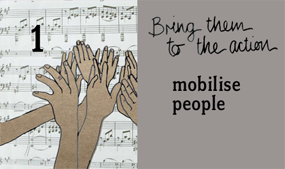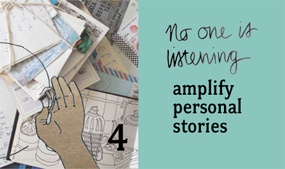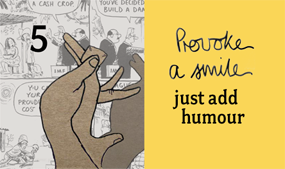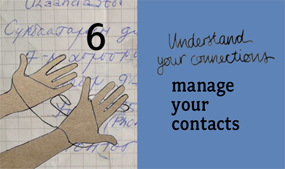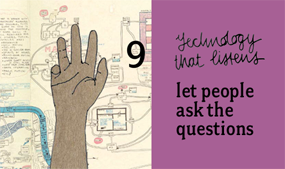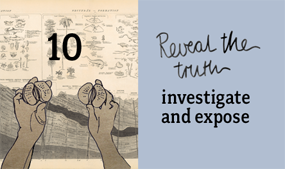Every day, migrants making their way through Mexico towards the United States face abuse and aggressions. The Mexican National Human Rights Commission has begun thinking about ways to use new technologies to help protect and defend migrants while they are in transit. Witness and Record, the second tactic from 10 Tactics, has prompted the Commission, an autonomous federal institution dedicated to promoting human rights, to explore the ways cell phones can be used in defense of migrants’ rights.
Ana Ruiz, head of the National Human Rights Commission's migrant rights office, is considering methods to encourage citizens to use their cell phones and digital cameras to document human rights abuses. She said, "It helps us a lot when the victims can document what is happening at the moment that it is occurring." The Commission is looking into training villagers from towns with high rates of migration to use their mobile phones to take pictures or send texts when they encounter aggression while migrating.
10 Tactics presents ways to incorporate new tools into their work and a mobile phone project is just one of the ideas the 10 Tactics video and flash cards have generated. Ana said, "In the video, I liked that the 10 Tactics are made very clear. It is something very digestible, that can be used. It is something very practical… That helped us a lot, to see how the practices of these organisations have been applied, that helped us a lot to visualise the things that they are doing."
The Commission has since created a 30 minute documentary immigration advocates in Mexico. Ana explained that the Commission conducted interviews in ten villages throughout the country considering the questions,
What is an advocate? What does a human rights advocate do? How can they bring to life defense of migrants? What obstacles have they come to face? Ana said, "What we just want to do is, with this as a tool, spread the word about what the advocates do as their work; many times they are forgotten or hidden, and they do a very important work and it is important to visualise, because many institutes of the government do not see what is being done."
While 10 Tactics has inspired Ana and others at the Commission to use new technologies for activism, they are confronted by various challenges, such as institutional barriers, that hold back the adoption of new tactics – the Commission does not even have a Facebook page. Ruiz explains,"I believe that has a lot to do with the generation gaps, the people that are a little younger, we have the this idea to use all the technologies, but I believe, and it is something that we have seen here at the office, that we need to train even the highest directors because it is they that make the decisions. So they are the ones who have to fall in love with these ideas for them to be implemented later."
While the Commission is starting to realise how digital tools can help with activism, workers still are limited by the publics lack of access to technology. Ana said, "the people do not always have a cell phone, they don’t always have access to the internet, and they don’t always know how to use certain technologies…They probably use a cell phone for nothing more than making a call, but they would never use it to take a picture, or they don’t know how to use a computer well. So more than anything it is the lack, one, of access to those technologies, and another to know how to use them for other ends such as documenting aggressions and things like that."
Despite these challenges Ana said she’s excited about the potential for 10 Tactics and digital tools to change human rights activism in Mexico, "I believe technologies are very important…to document violations and aggressions. Before they were nothing more than testimonies, written from complaints that we received, but now they also can be documented with photographs, videos, and just as these things are happening―now it is super easy with cell phones or with a digital camera."
The Commission is waiting for a Spanish/Latin American version of 10 Tactics so that next year the organisation can conduct trainings with other groups working along the migrant trail. "The material is spectacular and it came to us as something we really needed. For the freshness, for the design of the things, we loved it. In truth, we want to do many things; the only thing that has stopped us has been that it is in English."
Story and interview by Summer Harlow as part of research led by Dr. Laura Stein at the University of Texas at Austin.


